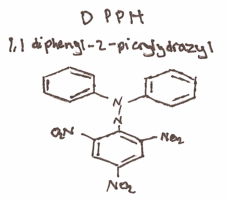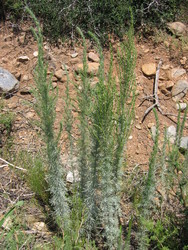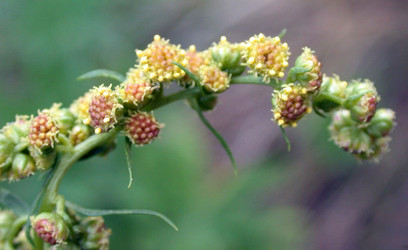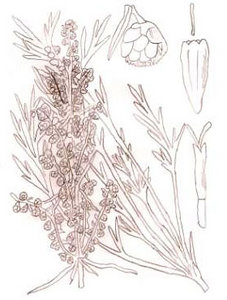Lakota name: cahḣlóġan waśťémna Listen to Lakota Plant Name: cahḣlóġan waśťémna
Listen to Lakota Plant Name: cahḣlóġan waśťémna
Scientific name: Artemisia campestris
Common names: field sagewort, beach wormwood, field sagebrush, field wormwood, prairie sagewort, tall wormwood
Lakota uses: A tea from the roots is used for one who cannot urinate or whose bowels do not move, or for a woman who is having difficulty giving birth. Pulverized roots are used for perfume. Pulverized roots are put on the face of a sleeping man so he will not wake up and his horses can be stolen.
Other medical uses: The herb is anthelmintic, antiseptic, cholagogue, deobstruent, emmenagogue, stomachic and tonic (see list of terms below). The main use of this herb is as an emmenagogue, and it is also a good stimulant tonic and has some nervine properties. The leaves have been chewed in order to treat stomach problems. The plant was used by some native North American Indian tribes as an abortifacient to terminate difficult pregnancies. The plant has been crushed and applied externally to rheumatic joints, eczema, bruises and sores. A poultice of the crushed leaves has been applied to sore eyes. An infusion of the roots has been used, especially on children, as a hair tonic and to treat scalp infections. It has been taken internally to promote urination and bowel movements.
Secondary compounds: A water extract of A. campestris showed a strong scavenging action of 1,1-diphenyl-2-picrylhydrazyl (DPPH), hydroxyl and superoxide anion radicals. A. campestris contains DPPH, which is an antioxidant.


Molecular structure of 1,1-diphenyl-2-picrylhydrazyl (DPPH). © 1sagebrush13
Federal status: It is very widespread and is sometimes considered to be invasive. However, some subspecies are considered threatened and endangered.
Pollination: Field sagewort flowers are wind-pollinated.



Artemisia campestris plants (© 2006 gwarcita) and flowers (© Mary Ellen (Mel) Harte)
Habitats: grassland, cliffs, prairie, sand barrens & dunes
South Dakota distribution: Counties: Fall River, Custer, Pennington, Lawrence, Harding, Perkins, Stanley, Hughes, Brule, Faulk, McPherson, Sanborn, Day, Marshall, Roberts, Codington, and Minnehaha.
US distribution: AL, AZ, CA, CO, CT, DE, FL, ID, IL, IN, IA, KS, ME, MA, MI, MN, MS, MO, MT, NE, NH, NJ, NM, NY, ND, OH, OK, PA, RI, SC, SD, TX, VT, VA, WA, WI, WY
Global distribution: Field sagewort is a circumboreal (throughout far northern regions) species with a wide distribution and altitudinal range in North America. It occurs in nearly all US states and Canadian territories.
Words to know:
- Anthelmintic - drugs that expel parasitic worms
- Antiseptic - agent that kills or inhibits the growth of microorganisms on the external surfaces of the body.
- Cholagogue - a medicinal agent which promotes the discharge of bile from the system
- Deobstrudent - A medicine which removes obstructions from fluid canals
- Emmenagogue - Promotes or increases the menstrual flow.
- Nervine - A nerve tonic, a medicine that acts therapeutically upon the nerves, particularly in the sense of a sedative that serves to calm ruffled nerves.
- Stomachic - A stomachic medicine is one that serves to tone the stomach, improving its function and increasing appetite. It is an old term that is no longer applied.
- Abortifacient - a substance that induces abortion.
Information on the Internet
- The Unifersity of Texas at Austin, Native Plant Database
- USDA Natural Resources Conservatoin Service, PLANTS Profile
- Artemisia campestris page of USDA Forest Service, Fire Effects Information System
- Illinois Plant Information Network, Artemisia campestris
- BioInfoBank Library, Antioxidant and hepatoprotective actions of the medicinal herb Artemisia campestris from the Okinawa Islands.
- Medallion Laboratories Analytical Progress, Antioxidant Activity
- Plants For A Future: Database Search Results for Artemisia campestris





 Go to quick links
Go to quick search
Go to navigation for this section of the ToL site
Go to detailed links for the ToL site
Go to quick links
Go to quick search
Go to navigation for this section of the ToL site
Go to detailed links for the ToL site